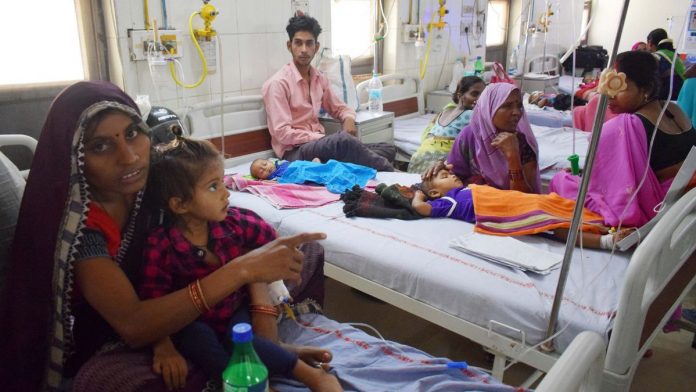
- 1Share
New Delhi: Death of children due to diseases such as diarrhoea and malaria have significantly reduced between 2015 and 2019 after the launch of Prime Minister Narendra Modi’s flagship scheme, Swachh Bharat Mission (SBM), says the Economic Survey 2018-19 released Thursday.
According to the survey released by Chief Economic Adviser Krishnamurthy Subramanian, PM Modi’s move to improve sanitation has led to the fall in the number of diarrhoea cases among children aged below five years in Gujarat, Tamil Nadu, West Bengal and Bihar, among others.
Similar improvements have been achieved in malaria, stillbirths and low birth weight cases. The survey, however, did not say in which states these cases have reduced.
In 2015, diarrhoea was considered as the third leading cause of child mortality in India that claimed at least 13 per cent of lives every year of children aged below 5 years.
Hailing Swachh Bharat, the survey stated: “SBM, one of the largest cleanliness drives in the world, has brought in a remarkable transformation and traceable health benefits.”
The survey stated that under Swachch Bharat Mission, focus was given on making areas open defecation free (ODF) and construction of individual household latrines (IHHL).
It highlighted that most states have now achieved the status of 100 per cent ODF — which means people are using toilets for defecation instead of going to open spaces like fields.
In June this year, over 5.61 lakh villages, 2.48 lakh gram panchayats, over 6,000 blocks and 618 districts have been declared open defecation free.
The survey lauded the improvement in the country’s sanitation status after PM Modi launched the scheme at Rajghat in New Delhi in 2014 on Mahatma Gandhi’s birthday, 2 October.
In future, the mission will incorporate environmental and water management issues “for sustainable improvements in the long-term,” the survey stated.
70 per cent drop in malaria cases
To gauge the impact of SBM on the country’s healthcare parameters, the survey separated districts into two groups — the first group where household latrine coverage was low and the second group where the coverage was high.
The survey tracked the number of diarrhoea and malaria cases in children aged below 5 years, stillbirth and low birth weight cases in these two groups between March 2015 — when SBM began its implementation — and March 2019 — when most districts in India had IHHL coverage of 100 per cent.
The survey found diarrhoea cases reduced by 18 per cent in four years from 6,968 in 2015 to 5,683 in 2019 in the first group. In the second group, the results were similar in which the cases plummeted by around 14 per cent — from 5,262 in 2015 to 4,550 in 2019.
Similarly, malaria cases also dropped by 70 per cent — from 761 in 2015 to 222 in 2019 in the first group, and from 273 to 113 (around 60 per cent) in the second group.
“…health indicators including diarrhoea and malaria cases improved significantly in both groups after the implementation of SBM,” said the survey.
Report card of SBM
Before the launch of the scheme, the survey stated that around 10 crore rural and about one crore urban households in India were without a sanitary toilet and over 55 crore — nearly half of the country’s population — still practised open defecation.
“In fact, an unflattering national fact was that open defecation in India represented 60 per cent of open defecation globally,” the survey said.
So far, 98.9 per cent of India has been covered under Modi’s Swachh Bharat, the survey said. Since the launch of the scheme, over 9.5 crore toilets have been built across the country, it stated.
According to the survey, Goa ranked lowest in construction of individual latrines in the houses of beneficiaries. Odisha and Telangana, too, ranked among the lowest in terms of IHHL coverage.
With the slow distribution of latrines, Goa also ranked lowest in ODF coverage followed by Odisha, Telangana and Bihar, the survey stated.
Read ThePrint's razor-sharp editorial take on the news of the day. In just 50 words
- 1Share